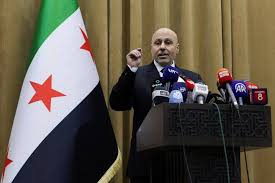Committee Investigating Events on the Syrian Coast: We Documented the Fall of 1469 Individuals and Confirmed Serious Widespread Violations
July 22, 202588 ViewsRead Time: 5 minutes

Font Size
16
The special investigation committee into the events on the Syrian coast, which occurred at the beginning of last March, announced that it has identified 298 individuals suspected of involvement in committing serious violations, noting that it documented the fall of 1469 individuals, including 90 women. It stated that those described as "remnants of the former regime" killed 238 security personnel.
During a press conference on Tuesday, the committee pointed out that its final report indicated that these violations were not coordinated under a unified reference, but were characterized by random expansion. It confirmed that sectarian motives were mostly retaliatory rather than ideological, explaining that some violations were classified as "intentional killings of civilians, as well as documented cases of theft, arson, abuse, and torture."
The head of the National Committee for Investigation and Fact-Finding into the events on the coast, Judge Jumaa Al-Anzi, stated that the committee completed its report by the specified deadline and submitted it to the President.
The areas of the Syrian coast (western Syria) witnessed armed clashes on March 6th, following attacks by armed individuals affiliated with the Assad regime against public security patrols, resulting in the death of about 200 individuals. This prompted the authorities to send significant reinforcements from the Ministry of Defense and security forces to Latakia, Tartus to pursue the armed groups. The operations continued for at least 3 days, but they witnessed violations against civilians. Accusations were directed at the "remnants of the regime" and unorganized groups.
On the other hand, the committee's spokesperson, lawyer Yasser Al-Farhan, explained that the committee relied on general monitoring, investigation, and fact-finding in the framework of its jurisdiction geographically in the provinces of Latakia, Tartus, and Hama, temporally to examine the events at the beginning of March and thereafter, and thematically to investigate the circumstances that led to the events.
He mentioned that the committee "visited 33 sites, inspected crime scenes, examined burial sites, and described its observations in the presence of local leaders, religious figures, and representatives of families."
He added, "On the ground, the committee held several meetings with dozens of individuals in each town, listened to witnesses from families in separate sessions, and documented 938 testimonies, including 452 related to murder incidents and 486 related to armed robbery, theft, arson of homes and shops, or torture."
The committee also listened to 23 briefings and testimonies from officials in official bodies, interrogated the detained suspects, and took necessary measures to refer them to the judiciary.
Al-Farhan warned that the committee conducted "intensive consultations with relevant international entities at the United Nations through high-level meetings with the Assistant Secretary-General for Humanitarian Affairs, the President and members of the International Commission of Inquiry on Syria, the Office of the High Commissioner for Human Rights, the Office of the International Envoy to Syria, Human Rights Watch, and Amnesty International. The committee discussed in its meetings and correspondence the mechanisms for adopting the best means, standards, and possible procedures in the investigation."
He stated that the committee based its conclusions on suspicion rather than conclusive evidence usually required in courts, and in order not to cause harm, it did not disclose the names of the suspects, pointing out that it kept the names of some witnesses who feared revealing their identities.
He added, "The committee examined information, documents, reports, testimonies, physical and digital evidence, and drew its conclusions based on the convictions formed by its members during a specified period of 4 months within the timeframe of its mandate, including the extension period issued by the President."
Al-Farhan said that those described as "remnants" carried out on March 6th a "series of wide hostile operations, targeting army and public security headquarters, checkpoints, and patrols with heavy, medium, and light weapons, blocking main roads, and according to the committee's findings, killing 238 young security and army personnel in the provinces of Latakia, Tartus, and Hama."
He continued, "Some security personnel were killed after surrendering their weapons as a result of negotiations mediated by elders, some were killed while receiving treatment as wounded, and some were killed while being prisoners, and the remnants buried some of them in a mass grave."
He mentioned that the "remnants" targeted public roads and hospitals, disabling 6 of them, and killed a number of Sunni civilians according to information received by the committee, which could not document their data according to its standards.
He explained that the committee identified what was commonly referred to as "remnants" as remnants of organized armed groups linked to the former Assad regime outside the law and the state's legitimacy.
The spokesperson for the National Committee for Investigation and Fact-Finding into the events on the coast stated that the committee identified 265 names of "potential accused individuals who joined the rebel armed groups outside the law linked to the Assad regime and commonly referred to as remnants, and for whom the committee had reasonable grounds to suspect their involvement in serious crimes and violations," based on testimonies from the families of the victims, local residents, government employees, interrogation reports of detainees, examination of digital evidence, and other evidence.
In the press briefing, the committee emphasized the need to redress the harm according to the severity of the violations, with the most severe being murder.